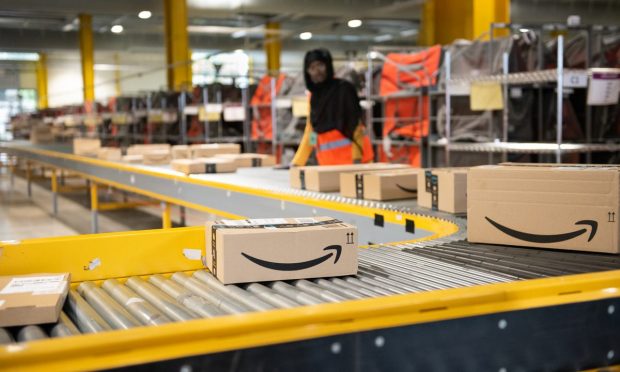Amazon Warns of Billions in Additional Costs to Meet Holiday Demand

Amazon executives say increased capacity in the eCommerce company’s fulfillment network will help ensure it can meet demand for holiday shopping in the coming weeks, but the ongoing labor shortage is increasing costs and causing inefficiencies.
Chief Financial Officer Brian Olsavsky told analysts on a conference call Thursday (Oct. 28) that Amazon is “dealing with labor risks and supply chain interruptions like many other companies,” and consumers have continued returning to pre-pandemic patterns, going back to brick-and-mortar stores and spending more on travel and services.
Amazon CEO Andy Jassy did not speak to analysts on the conference call, but he said in a press release that the company expects to incur “several billion dollars of additional costs” in its eCommerce business over the fourth quarter in order to manage labor supply shortages, global supply chain issues and increased freight and shipping costs. The goal, he said, is to do “whatever it takes to minimize the impact on customers and selling partners.”
“It’ll be expensive for us in the short term, but it’s the right prioritization for our customers and partners,” Jassy said.
In the third quarter, labor costs and inflation added approximately $2 billion to Amazon’s operating costs, particularly in August and September. Olsavsky said in the fourth quarter, these costs will likely be close to $4 billion.
“In Q3, labor became our primary capacity constraint, not storage space or fulfillment capacity,” the CFO said on the call, noting that since the beginning of the pandemic, Amazon has doubled the size of its fulfillment network. As a result of the labor shortage, the Seattle-based company was forced to reroute inventory to warehouses that had enough workers to receive the products, which Olsavsky said resulted in “less optimal placement, which leads to longer and more expensive transportation routes.”
However, Amazon does not intend to pass these increased costs onto customers or third-party sellers on its marketplace.
“We see ourselves as the shock absorber, absorbing a lot of the costs so that the customer is not impacted and sellers are not impacted,” Olsavsky said.
Amazon said in the release that net sales increased 15% to nearly $110.8 billion in the third quarter, but still slightly below analysts’ expectations of $111.6 billion and 16% growth. Net product sales accounted for $54.9 billion, up 4% compared to 2020, and net service sales totaled $55.9 billion, a 29% year-over-year increase.
Pulling Holiday Demand Forward
Although Amazon is not holding its annual Prime Day sales event in the fall this year, Olsavsky said the eCommerce giant is still trying to get consumers to start holiday shopping early with promotions that started at the beginning of October.
“Obviously that works better for us than to have it all pit in a few concentrated weeks around Cyber Monday and Black Friday and the week before and two weeks after,” he said. “Operationally, it’s easier to perform when the volume is spread out.”
PYMNTS research, conducted in collaboration with Kount, found that 87% of consumers plan to shop online this holiday season, a 10-percentage point jump from last year despite many consumers returning to reopened stores. Amazon, according to PYMNTS’ proprietary data, has nearly 50% of the eCommerce market and over 9% of consumers’ overall retail spend.
Read more: Holiday Shopping Outlook Suggests ‘Amazon Christmas’ May be Underway
Amazon said in the release that net sales in the fourth quarter are expected to be between $130 billion and $140 billion, which amounts to growth between 4% and 12% compared to the same period last year. The average analyst estimate for fourth-quarter guidance was $142 billion.
Speeding up Delivery
Olsavsky also noted that Amazon has “unfinished business” on its promise of one-day delivery made before the pandemic. The company was making progress in ramping up the offering in 2019 and early 2020 before the pandemic, he said, but, “we’re still not back to levels that we saw pre-pandemic.”
“We’re getting closer,” Olsavsky added. “We feel that labor constraints have not helped us close the gap there. But we don’t want to be just as good as we were before the pandemic. We expect that to increase in 2022.”
Although he said he didn’t want to forecast too much, he said he expects that one-day delivery could be a boon to Amazon’s already dominant eCommerce business.
“When something’s available in one day or less, now you really don’t have to go to a store, even if you need it very quickly,” Olsavsky said.
